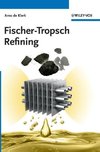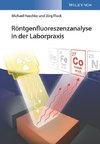
-
 Anglický jazyk
Anglický jazyk
Structures and Conformations of Non-Rigid Molecules
Autor: J. Laane
From the beginnings of modern chemistry, molecular structure has been a lively area of research and speculation. For more than half a century spectroscopy and other methods have been available to characterize the structures and shapes of molecules, particularly... Viac o knihe
Na objednávku, dodanie 2-4 týždne
49.49 €
bežná cena: 54.99 €
O knihe
From the beginnings of modern chemistry, molecular structure has been a lively area of research and speculation. For more than half a century spectroscopy and other methods have been available to characterize the structures and shapes of molecules, particularly those that are rigid. However, most molecules are at least to some degree non-rigid and this non-rigidity plays an important role in such diverse areas as biological activity, energy transfer, and chemical reactivity. In addition, the large-amplitude vibrations present in non-rigid molecules give rise to unusual low-energy vibrational level patterns which have a dramatic effect on the thermodynamic properties of these systems. Only in recent years has a coherent picture of the energetics and dynamics of the conformational changes inherent in non-rigid (and semi-rigid) molecules begun to emerge. Advances have been made in a number of different experimental areas: vibrational (infrared and Raman) spectroscopy, rotational (microwave) spectroscopy, electron diffraction, and, most recently, laser techniques probing both the ground and excited electronic states. Theoretically, the proliferation of powerful computers coupled with scientific insight has allowed both empirical and ab initio methods to increase our understanding of the forces responsible for the structures and energies of non-rigid systems. The development of theory (group theoretical methods and potential energy surfaces) to understand the unique characteristics of the spectra of these floppy molecules has also been necessary to reach our present level of understanding.
The thirty chapters in this volume contributed by the key speakers at the Workshop are divided over the various areas. Both vibrational and rotational spectroscopy have been effective at determining the potential energy surfaces for non-rigid molecules, often in a complementary manner. Recent laser fluorescence work has extended these types of studies to electronic excited states. Electronic diffraction methods provide radial distribution functions from which both molecular structures and compositions of conformational mixtures can be found. Ab initio calculations have progressed substantially over the past few years, and, when carried out at a sufficiently high level, can accurately reproduce (or predict ahead of time) experimental findings. Much of the controversy of the ARW related to the question of when an ab initio is reliable. Since the computer programs are readily available, many poor calculations have been carried out. However, excellent results can be obtained from computations when properly done. A similar situation exists for experimental analyses. The complexities of non-rigid molecules are many, but major strides have been taken to understand their structures and conformational processes.
- Vydavateľstvo: Springer Netherlands
- Rok vydania: 2012
- Formát: Paperback
- Rozmer: 240 x 160 mm
- Jazyk: Anglický jazyk
- ISBN: 9789401049207



 Nemecký jazyk
Nemecký jazyk 








